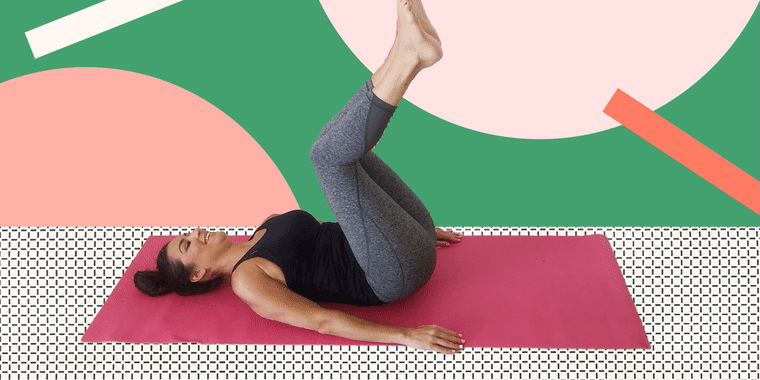As summer approaches, you may want to strengthen your abs quickly. But many people don’t use correct form when doing core workouts, and put stress on the neck and back.
Neck pain is a common problem when people do abdominal crunches. Although crunches seem easy, research suggests that crunches can increase the risk of low-back pain when they’re not performed correctly.
Welcome to Start TODAY. Sign up for our free Start TODAY newsletter to receive daily inspiration sent to your inbox — and join us on Instagram!
When my clients mention neck pain, I recommend reverse crunches instead. It’s a variation on the standard crunch and will work your abs, but it’s much less likely that it will cause injury.
In a reverse crunch, you leave your shoulders and neck on the floor and lift up your knees instead. This allows your neck and back to experience less stress while still targeting the abs.
Considered the opposite of the standard crunch, it activates the obliques and abdominal muscles to help tone your core.
Reverse crunches muscles worked
Reverse crunches, when done consistently and with proper form, can help strengthen the core without injuring your neck or lower back. More specifically, reverse crunches work your oblique muscles and major abdominal muscles.
No matter what type of activity we are doing, a strong core is essential to our balance, maintaining good posture and moving efficiently.
Common mistakes when doing reverse crunches
You need to perform a reverse crunch correctly in order to get all the benefits of doing the exercise. Sometimes people do reverse crunches by just using the momentum of the movement instead of working their core muscles, which makes the move less effective. It can also be difficult how high to bring your hips and legs off the ground.
Here are my best tips for a perfect reverse crunch:
- Don't swing your legs. Move slowly and accurately to get the most out of the reverse crunch. Don’t rely on momentum, but make sure each upward movement comes from squeezing your abs. Engage the core by imagining your belly button moving towards your spine.
- Don’t lift your hips too high. If your back loses contact with the mat, you’ve lifted up your hips too far. Tilt your pelvis forward and crunch just far enough to have your tailbone lift off the ground.
- Don’t let your knees to move past your hips too quickly. Control the movement of your lower body and move purposefully to engage your core more effectively.
How to do a modified reverse crunch
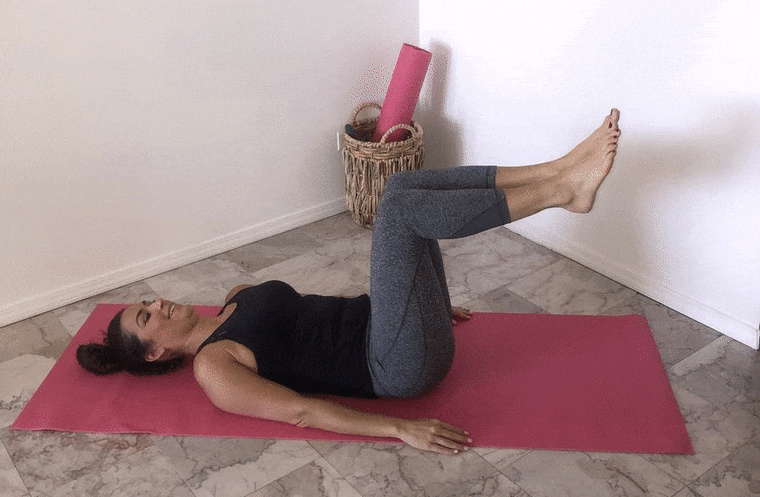
If you’re not used to working your core, reverse crunches can be difficult. But the move is very easy to modify. Simply decrease the range of motion by moving your hips and legs only halfway or even a quarter of the way of the full movement.
How to do reverse crunches
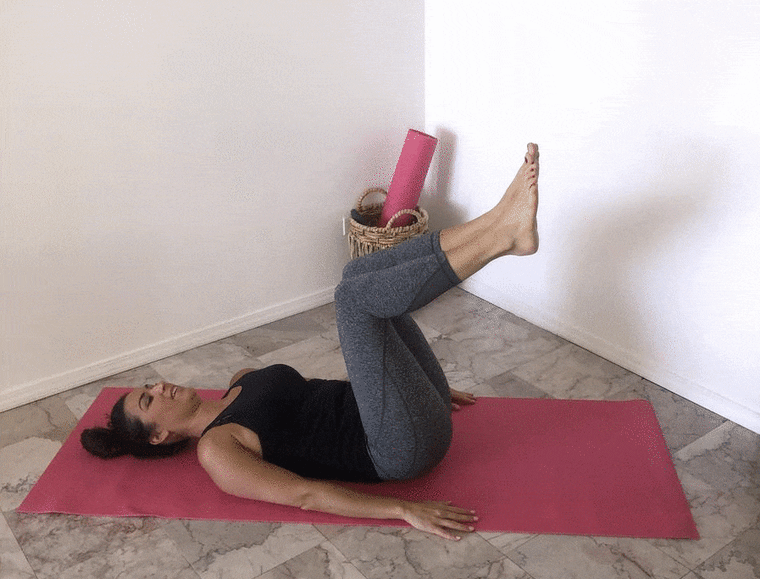
Follow the steps below to perform the reverse crunch. Remember to take it slow and control your momentum.
- Lie on your back with your arms at your sides.
- With your knees bent, squeeze your abs and raise your legs so that your knees are hovering over your hips at a 90-degree angle. Keep your calves parallel to the mat so that your legs are in a tabletop position.
- Engage your core as you lift your hips and knees toward your chest. Think of tilting your pelvis forward. Keep your entire upper body on the ground. Make sure that only the lowest part of your back comes off the ground; nothing higher.
- Keep the legs at a 90-degree angle throughout the entire movement as you come back down, through tabletop, and tap the feet on the ground.
- Repeat the steps, remembering to breathe slowly while squeezing your abdominals.
4 reverse crunch exercises
There are plenty of exercises that are similar to the reverse crunch. When working on core strength, I recommend performing these four moves until you feel confident enough to perform the reverse crunch without any modifications.
Bicycle crunch
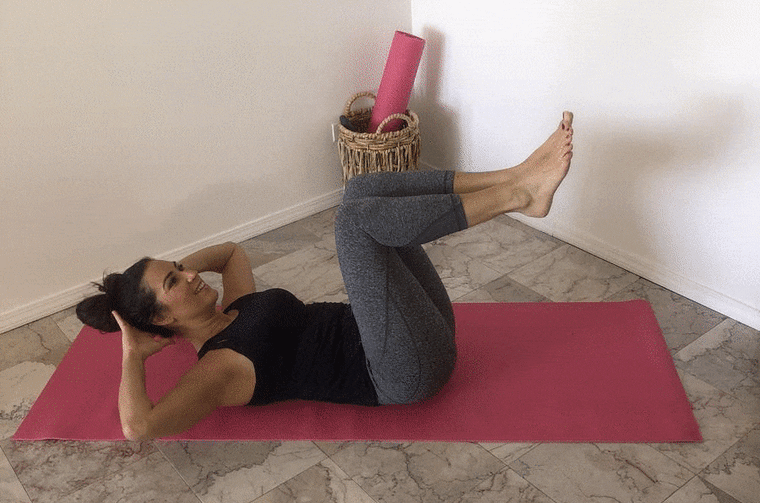
Start by lying flat on your back with your legs in tabletop position and your hands behind your head. Bend the left knee and straighten the right leg at a 45-degree angle, while also crunching your right elbow toward your left knee. Return to start, then bend the right knee in toward your chest while straightening the left leg at a 45-degree angle, crunching the left elbow to meet the right knee. Alternate legs as you continue your bicycle motion ten times on each side. Make sure to go slow, squeezing your core with every movement.
Wall sit
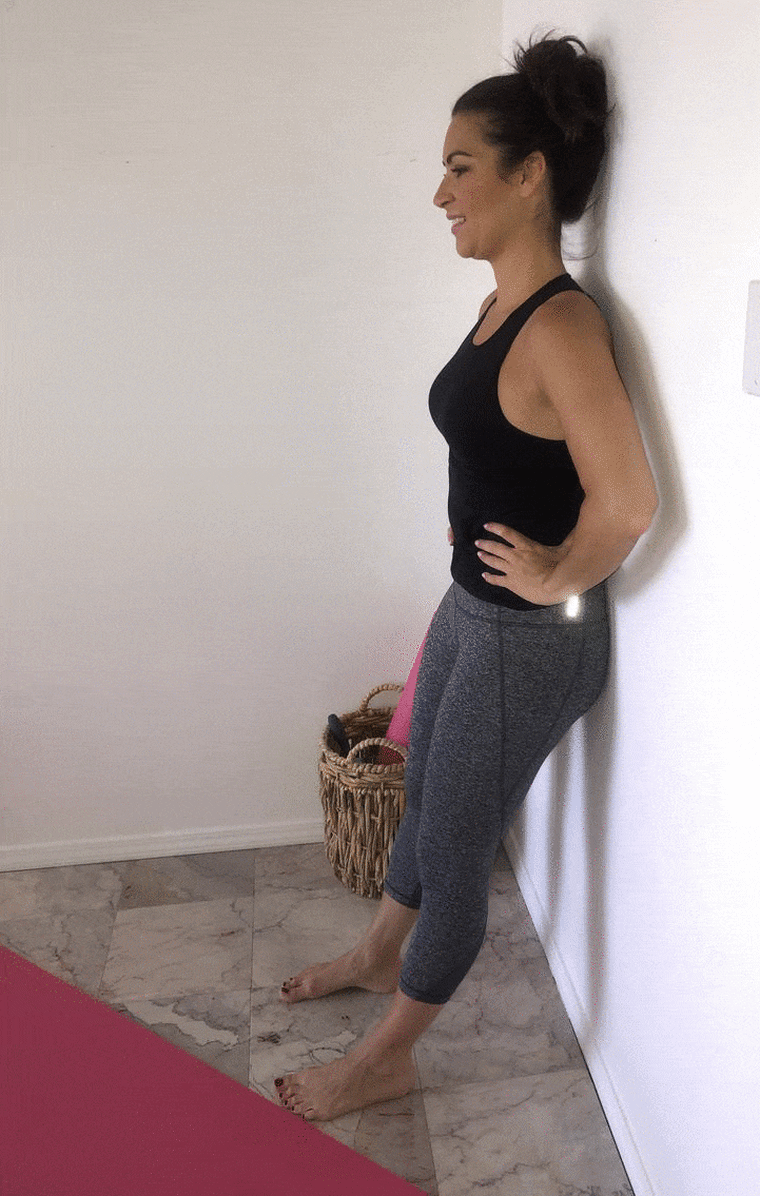
The wall sit is helpful to build balance and strength in the low back and core. Lean your back against a wall and sit down into a squat position as if sitting into a chair. Keep your low back pressed into the wall and your knees bent (somewhere between a 45- and 90-degree angle). Squeeze your core. Hold for 30 seconds, or as long as you can.
Mountain climbers
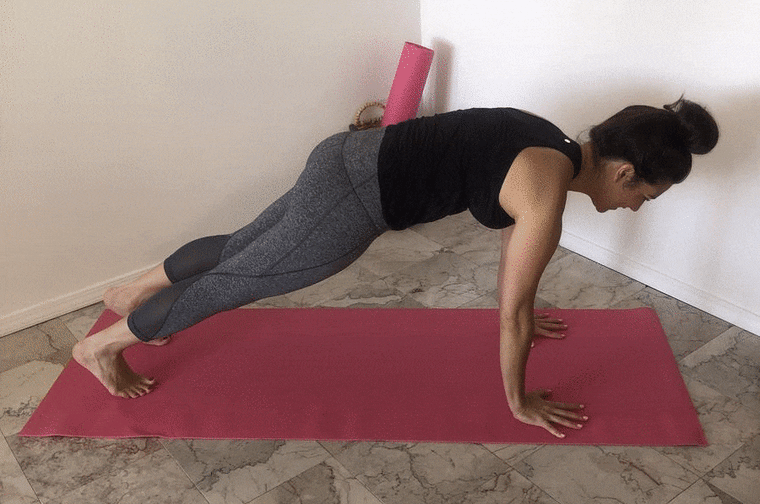
Mountain climbers involve the same type of lower-body motion as the reverse crunch. Begin in plank position. Bend one knee, bringing it toward your chest. Return to a plank position, then bring the alternate knee to your chest. Alternate legs, squeezing your core, performing 20 climbers total.
Oblique twists
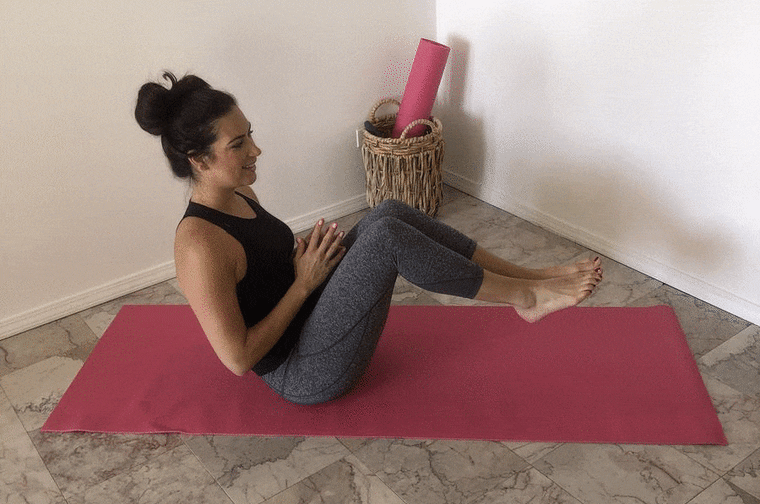
Sit on the mat with your knees bent and your feet raised off the floor. Pull your abs in and lift your shins to a 45-degree angle. Squeeze your abs, and twist your torso to the right, tapping the floor with your hands. Then twist your torso to the left, tapping the floor with your hands. Continue this motion from side to side, making sure to keep your head, arms and core aligned the entire time. To make this move more challenging, hold a weight in front of your chest as you move from side to side.
